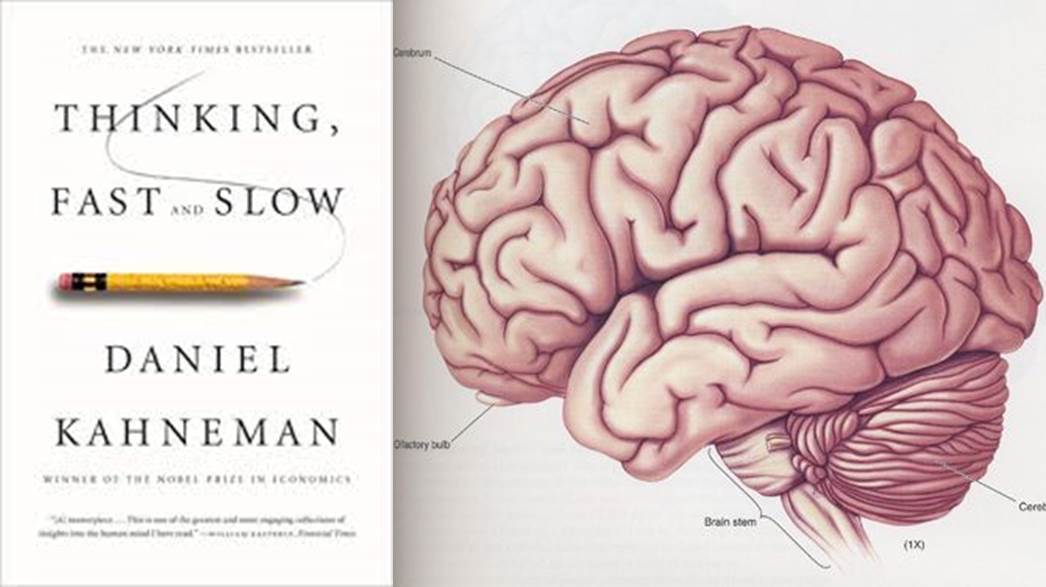How thinking fast and slow can help you when choosing S&OP/IBP software

Last month, I wrote an article explaining why S&OP/IBP software is currently such a hot topic (click here for the article). Since then, we have had the pleasure of presenting the executive programme on ‘From S&OP to IBP’ at the Rotterdam School of Management (RSM). The RSM session revolved around behavioural operations management. I’ve been exploring this topic for a while now, and I’ve devoured books by Kahneman (Thinking Fast and Slow) and various other authors. The RSM session re-emphasized just how much our behaviour leads to non-rational decisions – including when choosing S&OP/IBP software.
The S&OP/IBP software hype
So why do I think there’s such a buzz around S&OP/IBP software right now? On the supply side, there have been huge advances in terms of tool functionality, and technological developments (cloud, SaaS, etc.) are also encouraging people to think about acquiring new solutions or replacing existing ones. Meanwhile, on the customer side, the S&OP/IBP process is maturing and companies are finally freeing up budget again to invest in supportive tools. Besides that, S&OP/IBP software is benefiting from the general software hype and trends such as artificial intelligence, Internet of Things, blockchain, platforms, etc., plus suppliers and consultants are eager to ‘flog’ their wares. As a result of all this, there could be several good reasons to acquire (replacement) software. But is such software easy to select and implement? No it isn’t, and especially not if you make the wrong choices in terms of the software tool and/or implementation partner. On top of all that, we’re not even rational…
Our irrational behaviour
We might like to believe we’re rational decision-makers, but it turns out that we’re not. Decisions play a central role in our everyday working lives. The fundamental assumption is that we make these decisions rationally. Herbert Simon, a pioneer in the field of decision-making, came up with the notion of ‘bounded rationality’. According to Simon, individual rational decision-making is limited by a number of factors. The first is the lack of information and/or data (i.e. unavailable or incomplete). The second factor relates to cognitive limitations – a lack of knowledge and/or insight. The third factor is not having enough time to make a rational, carefully considered decision. So how do we deal with these factors to reach a decision nevertheless? In scientific terms, this is called ‘heuristics’. For example, we develop routines to help us deal with complex problems (e.g. driving a car, cycling, chewing). We simplify complexity and we use rules of thumb or mental shortcuts. We rely more on our instinct or intuition, and make decisions more subconsciously (as Kahneman puts it: we use System 1 in our brain). Unfortunately this paves the way for what Kahneman calls biases and traps.
Biases and traps when choosing S&OP/IBP software
System 1 thinking (intuition=subconscious=System 1) can lead to poor decisions. Let’s now apply this to the S&OP/IBP software selection process. Staying with decision-making terminology, we can distinguish between ‘judgment’ and ‘choice’. So the first step is to evaluate the problem and the available options. Should we acquire new software, and if so which suppliers and partners are available to us? Typical biases and traps can include: the overconfidence bias (‘I know what a new system needs to do, I know which suppliers there are’), the anchoring bias (‘I know from experience what a system implementation costs’), and the confirmation bias (‘One of my customers has had good experience with Supplier X, so therefore…’). And we fall into the same trap in the second step, namely when making a choice. Examples of this include: loss aversion (‘But then I’ll lose the flexibility that I currently have with my own spreadsheets’) and mental accounting (‘It can cost a maximum of 50% of our IT investment budget’). In other words, our decision-making is a lot less rational than we realize. Just to make things even more complex, teams aren’t necessarily better. For instance, consider the champion bias (‘Supplier X recommended by Colleague Y must be good, because Colleague Y was successful in the previous selection process too’) or the sunflower bias (‘If my boss is so enthusiastic about Supplier X, who am I to oppose it?’).
How can we ensure we make the right decision?
So is it at all possible to make an effective decision? Yes, of course. One of the biggest obstacles is that we’re often unaware of the biases and traps in our decision-making process. Therefore, awareness should be the first step. To use Kahneman’s terminology again, we need to engage System 2 in our brain in conjunction with System 1. Activating System 2 requires extra effort. It means consciously thinking about a complex problem, and it takes longer too (analysis=conscious=System 2). Besides that, it is wise to make complex decisions in a team, but the team must have the necessary reflexivity, i.e. it must be capable of collectively reflecting on the strategy/goals and processes. This ensures that the team adds value, and biases and traps are avoided. But what does all this mean for the acquisition of S&OP/IBP software? Turn it into a conscious process (System 2) and form a team to work through it. In other words, don’t leave it to a few (or even just one) individual(s) or supplier(s). Consciously invest more time and effort beforehand, otherwise what seems like a good deal at first could soon end up costing you a lot more than you expect.



